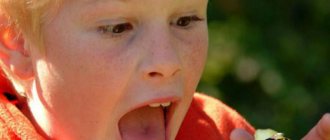The most common types of sleep disorders are insomnia and hypersomnia (a condition characterized by excessive sleepiness). Also in the modern world, sleep-wake disturbances are often encountered, which are caused by changes in time zone or work schedule. However, there are also more “exotic” sleep disorders, which sometimes have strange, surprising or frightening manifestations. We'll talk about them in this article.
We will talk about parasomnia - a disorder that manifests itself either upon awakening from the rapid eye movement (REM) sleep phase, or during partial awakenings in the slow-wave sleep phase. Parasomnia includes sleepwalking, sleep paralysis, nightmares, waking up with confusion, night terrors, and more.
Sleepwalking
Sleepwalking is a sleep disorder characterized by movement during sleep. A person during an episode of sleepwalking is not able to react to others, and after it he does not remember anything. Sometimes sleepwalking also manifests itself as incoherent speech during sleep. Children aged eight to twelve years are most often susceptible to this disorder. However, attacks of sleepwalking can also occur in adults and in children under eight years of age. Most often, sleepwalking in children goes away by the age of ten.
It turns out that sleepwalking is a disorder that can be inherited. You've probably heard the opinion that it is dangerous to wake up a sleepwalker when he is walking in his sleep. In fact, this statement has no medical basis. It is possible to wake up a sleepwalker, and it will be safe for his health. The only thing is that he may become confused, not understand what is happening to him at the moment, and get lost in space for a while.
Episodes of sleepwalking can be very dangerous due to the person's lack of response to the environment, which can result in them falling, crashing into an object, etc.
Night terror in children and adults
The main risk group is children of preschool and primary school age. At this time, the central nervous system is not yet fully formed, and vivid experiences or emotional excitability can cause an imbalance in the correct passage of all phases of sleep.
In adulthood, night terrors require more intense experiences to manifest and are primarily associated with agitation, anxiety, and aggression. But night terrors in children do not correlate with aggression.
At the same time, the likelihood of night terror attacks is largely influenced by heredity; this sleep disorder is inherited. These may also be other forms of parasomnias - for example, sleepwalking.
There are a number of factors that can trigger night terror attacks:
- previous traumatic experience;
- stressful life events (negative, positive and neutral - such as time zone change);
- overexcitation, physical and information fatigue;
- breathing disorders during sleep, high fever, colic, etc.
In children, night fear may also be associated with refusal of daytime sleep and failure of the regime.
Sleep paralysis
The name of this disorder sounds quite scary, but it is relatively harmless. Sleep paralysis is manifested by a complete or partial lack of ability to move and move limbs at the moment of falling asleep or waking up. Such episodes do not last long, and literally within a few minutes the person’s motor ability returns.
Such a sleep disorder can be very frightening for a person, since he cannot at all understand what happened. Many people get scared because they associate this condition with the action of various mystical forces. An episode of sleep paralysis ends quickly as a result of touch or sound.
The causes of sleep paralysis have not been established; however, it is known that it is inherited. Sleep paralysis can happen to a person once in a lifetime, or it can recur regularly.
Night terror symptoms
Contrary to its name, this sleep disorder is not directly related to the nature of dreams and is not related to nightmares. Night terror can be judged by the following manifestations:
- sudden but incomplete awakening from deep sleep;
- sudden body movements and screams preceding it;
- increased heart rate, sweating;
- dilated pupils;
- a person can suddenly get out of bed;
- lack of reaction to light, sound, people around him;
- after a few minutes the attack ends and the person falls asleep again;
- lack of memory of what happened.
Nightmares
Nightmares are vivid dreams that cause anxiety, fear, or horror. As a rule, a nightmare ends with a sharp awakening, which usually occurs in the REM sleep phase - a person remembers the dream well and can retell it. Most often, after a nightmare, it is quite difficult to fall asleep for some time.
The cause of nightmares can be illness, stress, a negative reaction to medications, etc.
If you suffer from nightmares for a long period of time, or they recur more than once a week, there is a reason to consult a doctor.
Night terrors in children
Night terrors in children are more common at an early age. A bad dream usually occurs in the first 2 hours after falling asleep. His body is very tense and stretched, he can sit up in bed, scream loudly and cry inconsolably.
Children's night terrors cannot be called fantasies. These are hallucinations in which the child’s brain, overexcited during the day, cannot enter the inhibition stage.
It is not easy to wake up a child in this state; he does not recognize the people around him, does not orient himself in space, and does not understand where he is.
Nightmares occur in children of any age. However, the largest number of cases is recorded between the ages of 3-5 years. Boys suffer more often. Complete relief from night terrors occurs at the age of 12 years.
If attacks occur more often than once a week; last more than 45 minutes; the child experiences drooling, twitching, and muscle tension in the body, immediately consult a pediatrician for advice.
Night terrors
In its manifestation, this sleep disorder is similar to a nightmare, but the difference is that attacks of night terrors occur during the deep sleep stage. A person suddenly wakes up at night with a feeling of fear. In fact, the person may not wake up completely. As a rule, he does not respond to questions or to the environment. This episode lasts about fifteen minutes, after which the person falls asleep again. In the morning he will not remember the fear of the night.
The danger of night fears is that a person can make involuntary movements with his hands or feet and injure his partner.
This disorder is most common among children. Between three and five years of age, about 5 percent of all children experience night terrors. Along with night terrors, children may experience such manifestations as walking or talking in their sleep.
This disorder also occurs among adults. It is known that night terrors can be hereditary. In adults, they can be provoked by factors such as alcohol consumption, stress, and emotional tension.
What is the difference between nightmares and fears
Night terrors and nightmares are different. The first is normal in the development of young children. This phenomenon is typical for every twentieth child. This is otherwise known as parasomnia during the slow-wave sleep phase. Sometimes parents themselves are horrified to see how restlessly their child sleeps.
After a night out, children have a confused mind, and it is not always possible to immediately reach them and talk to them. The child continues to be in deep sleep; it seems to him that this is all happening in reality. For this reason, there is no reaction to the surrounding reality. Panic is visible on your face, your heart is beating faster. Some constantly break out of their hands and scream. The condition can last from several minutes to half an hour. Children do not come to their senses quickly, sometimes they look into emptiness and do not want to go back to sleep. Such a baby may not remember in the morning what happened to him.
Most often, children's night terrors occur in the age group up to five years. The most common reason is disruption of sleep patterns, high fever, lack of sleep, consequences of illness, and various experiences.
Nightmares are more commonly referred to as parasomnias, which occur during REM sleep. Children feel threatened in the future tense, they get angry at their parents, and show aggression towards pets. After such terrible dreams, the baby is afraid to fall asleep, to stay in a dark room, here the parents’ help is needed.
Please note that scary dreams as a phenomenon occur more often with boys than with girls. This is due to the structure of the brain.
Anxious dreams are treated with medication. One of the causes of nightmares is disruption of the body's functioning, taking medications. In some cases, consultation with a psychiatrist or psychologist is necessary.
Talking in your sleep
This sleep disorder manifests itself during the transition from sleep to wakefulness. A person can speak some coherent phrases or sentences in a dream, or he can mutter something that doesn’t make any sense, or simply make some sounds. The disturbance is harmless, but can frighten people who are near the sleeping person. The next morning, a person prone to talking in his sleep will most likely not remember anything.
Speaking in a dream can be provoked by external factors such as stress, fever, etc.
Diagnosis and treatment of night terrors
If attacks occur rarely, then this disorder may be a variant of the norm and does not require specialist intervention. However, if your child has been regularly experiencing night terrors for a week or more, he or she should be taken to the pediatrician. The doctor will conduct a differential diagnosis to separate night terror from other diseases with similar symptoms - nightmares, neurological disorders, etc. You can expect to conduct polysomnography (identifying various characteristics of the body during sleep - changes in pulse, pressure, breathing rate, etc. .) and electroencephalography.
In rare cases, drug treatment may be prescribed. Measures to help reduce the frequency of night terror attacks in children include:
- identifying and, if possible, eliminating factors that contribute to emotional stress;
- showing more attention and care (this does not mean that parents are not paying enough of them; perhaps the child is simply going through a period when they are needed even more);
- increasing the amount of rest.
For adults, it is important to examine whether night terrors are isolated symptoms or whether there are signs of other sleep disorders or diseases. In the first situation, it may be enough to pay attention to the factors causing anxiety and aggression; in the second, consultation with a specialist may be required.
In any case, you should not wake up a person experiencing this attack. Night terror is associated with the deep sleep phase, and a sharp awakening from it, even normally, is associated with feelings of weakness, confusion and disorientation in space. If there are no other options left, you can try to do this very carefully and carefully, gradually removing you from sleep. But it is better to try to calmly and carefully return the child or adult to bed - there is a high probability that they will not wake up.
To summarize, night terror is a sleep disorder that can occur normally and does not cause harm to the person. It often occurs in children, and in such situations it is important for parents to remain calm so that their experiences do not provoke fear of falling asleep. Adults experiencing night terrors should pay attention to the sources of anxiety and aggression in their lives.
Symptoms
- Hypertension (which may be caused by sleep apnea)
- Coordination problems (which may be caused by lack of sleep)
- Drowsiness
- Poor concentration
- Slower reaction time
- Weight gain
Mood and anxiety disorders can develop due to persistent sleep disturbances, and modern medicine supports the theory that these mental state changes in the brain are risk factors for patient morbidity and mortality from medical conditions (eg, cardiovascular disease).
Caution should be exercised when prescribing treatment to elderly patients and those at increased risk of falls.









